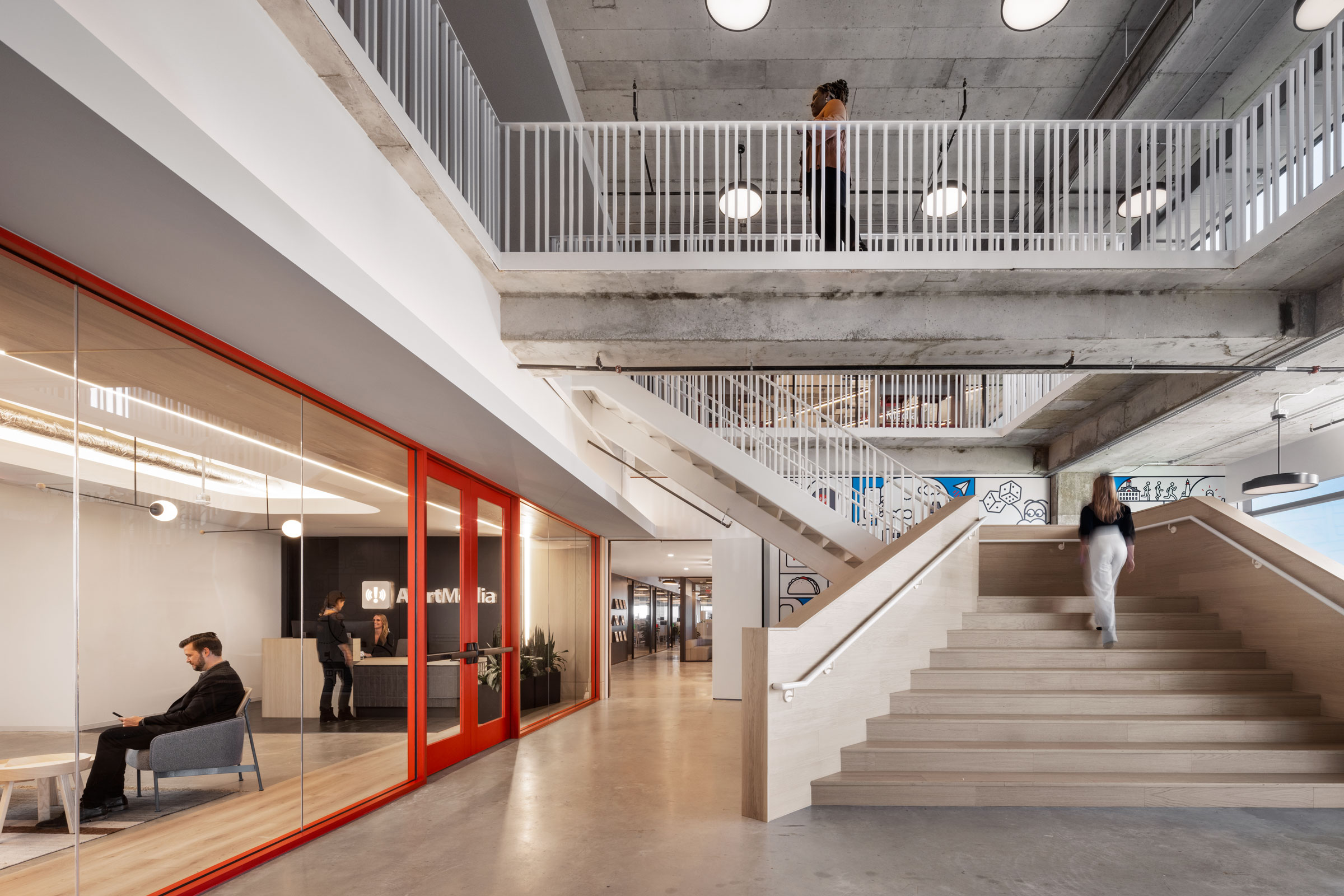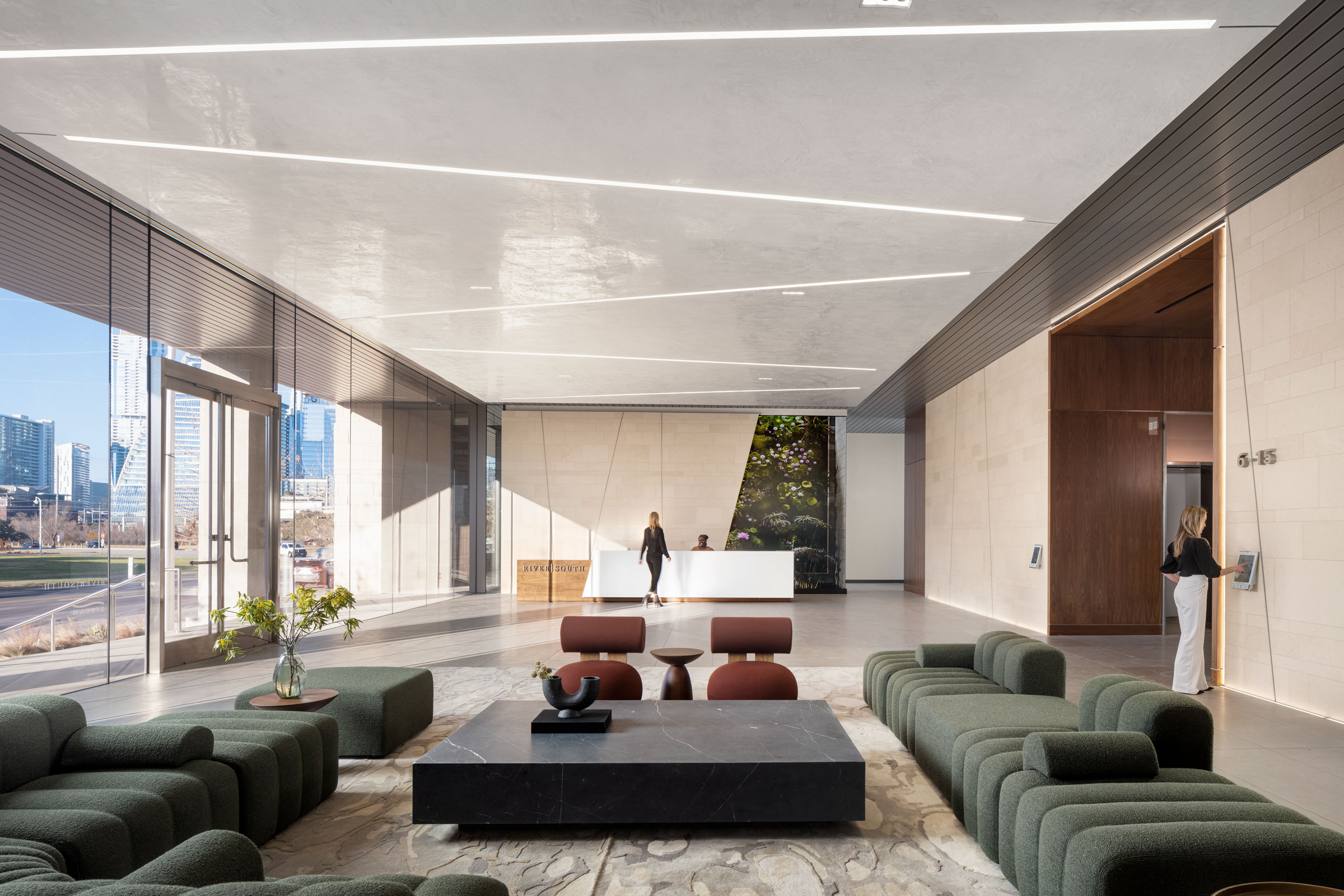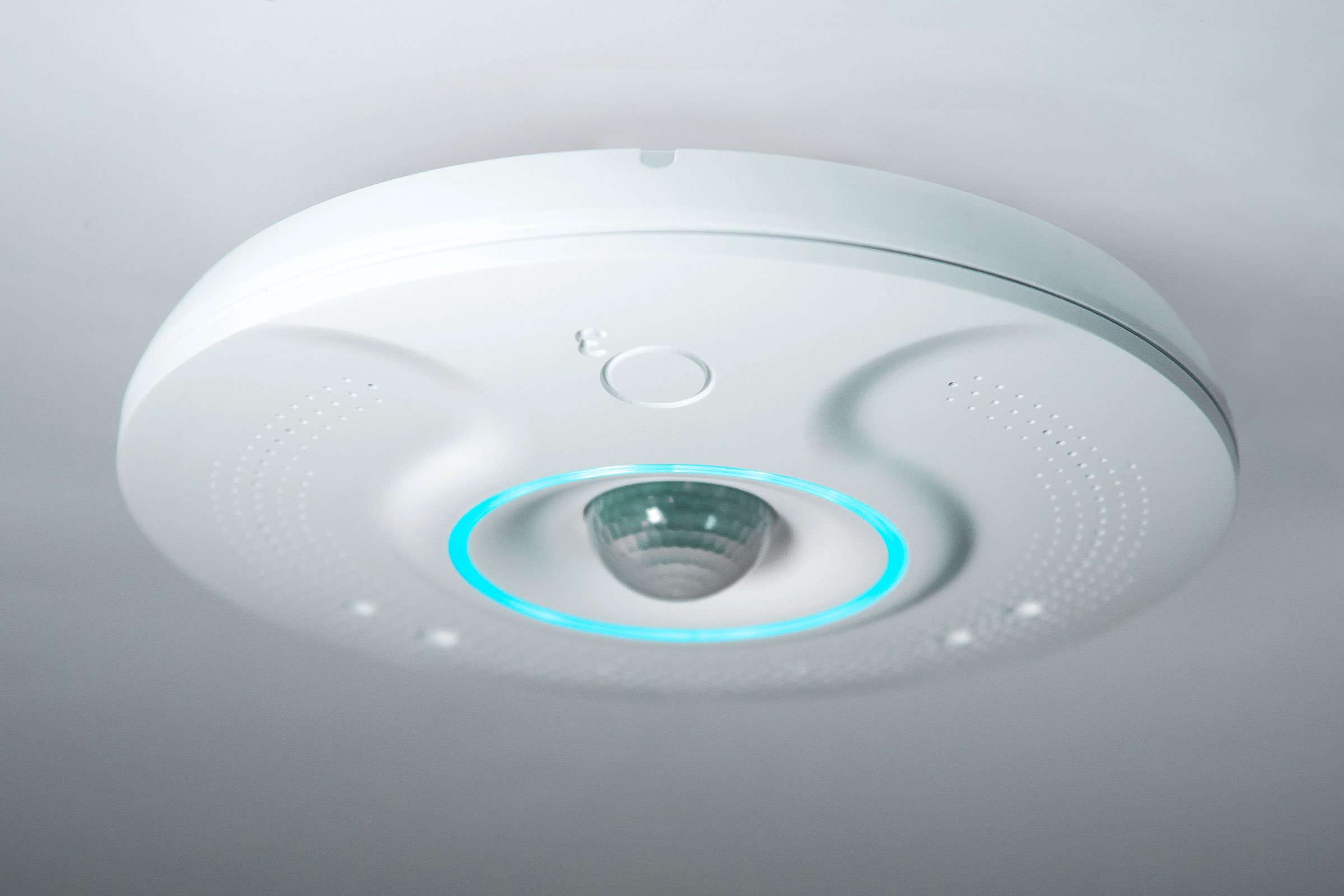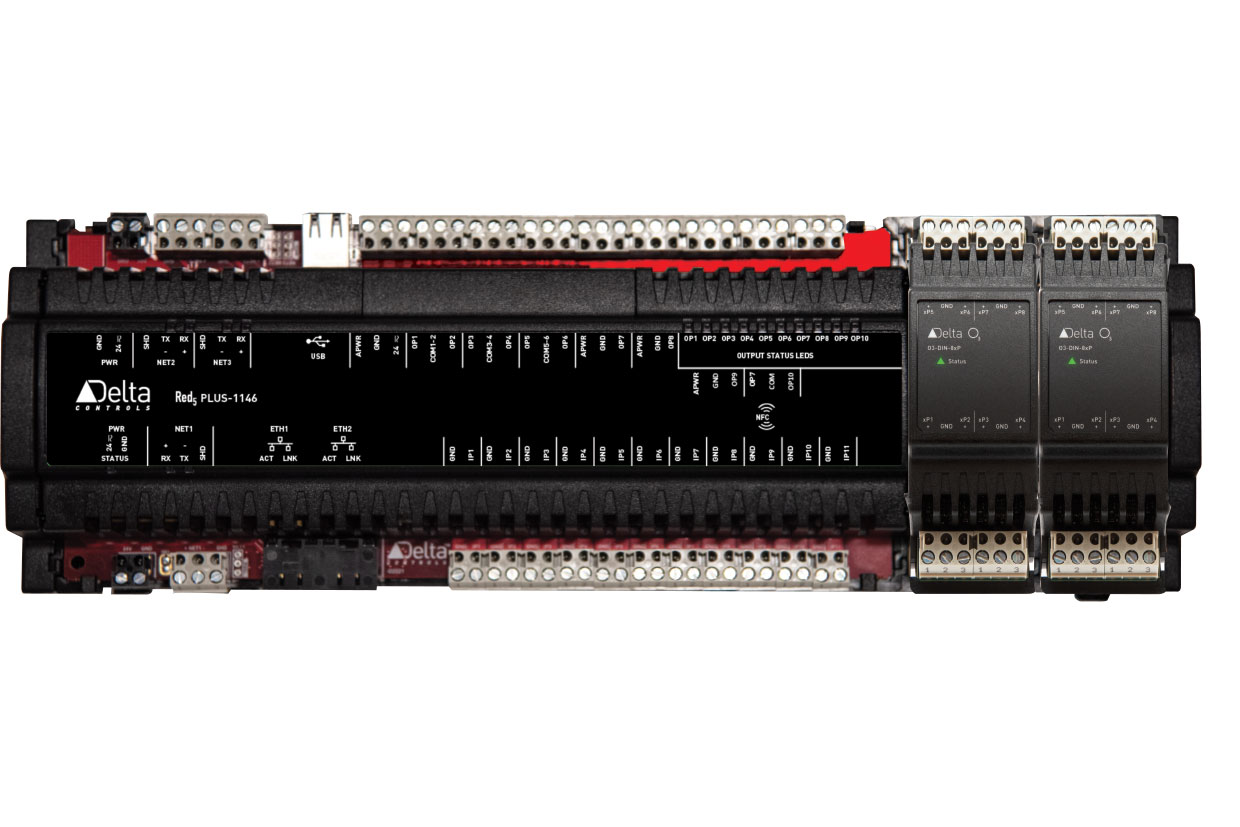Story at a glance:
- Building automation systems are networks designed to connect, control, and automate certain functions in a building.
- Most modern building automation systems consist of four distinct levels: input/output, field controllers, supervisory devices, and servers/applications.
- The RiverSouth office building in Austin, Texas is considered to be one of the smartest buildings in the United States thanks to its innovative use of building automation systems.
Also referred to as building management or building control systems, building automation systems (BAS) are networks designed to automate certain building functions—such as heating and air conditioning, lighting, alarms, etc.—via a single set of controls.
Building automation systems have been around for several decades but have exploded in popularity in recent years with the introduction of Wi-Fi, Cloud-computing software, artificial intelligence, and innovative “smart” technology. The most advanced BAS can drastically reduce a building’s carbon emissions, significantly increase occupant comfort and safety, and optimize building performance for peak efficiency.
In this article we’ll explore the ins and outs of building automation systems, including how they work, their benefits and disadvantages, the various functions they perform, and more.
What is a Building Automation System?

Inside this Tulsa Library, a fully automated lighting system utilizes daylight harvesting, scheduling, and vacancy and occupancy sensors. Photo by Lara Swimmer
In the fundamental sense, a building automation system describes an integrated network of mechanical and electrical building automation devices—such as heating and cooling, ventilation, humidity control, lighting, alarms, etc.—that may be remotely accessed and controlled via a single control panel, tablet, computer, or smartphone.
In the US it’s estimated that approximately 15% of all commercial buildings use some form of building automation system—and almost all buildings, regardless of function, use at least one building automation device.
The History of Building Automation Systems
In its most rudimentary form building automation has existed since the late 1880s, beginning with the invention of the bi-metallic switch thermostat and electric thermostat, used to control central heating and cooling systems. Throughout the late 1880s and mid-1900s these basic building automation systems would rely primarily on pneumatic and analog controls. It is believed that the first true building automation system—which used analog electric controls to regulate both humidity and temperature—was installed during the 1920s.
Analog electric controls would then give way to digital control systems in the late 1970s with the advent of computer networking, data-transfer, and programmable logic controller technology. In 1987 BACnet—a non-proprietary communication protocol standard—was developed as a way to integrate multiple building automation devices under one control system, regardless of product manufacturer.
In 1999 building automation innovation was accelerated forward with the invention of Wi-Fi and the creation of the so-called “Internet of Things” (IoT). Throughout the early 2000s smartphones and cloud-based management systems allowed building automation to expand even further. Today most BAS facilitate digital control over everything from temperature, lighting, and humidity to windows, doors, alarms, security systems, and more, all under a smart, centralized network.
“There’s been incredible strides made on automation of systems over technical networks,” Darren Burns, director of innovation at Stantec, previously told gb&d. “In the past everything would be wired up and an occupancy center would tell you some information about lights. Now every light is a smart light, and every duct controller is a smart one. There is a new wave of looking at how things are delivered in a building environment to have a finer and finer level of control over the systems of a building itself.”
Benefits of Building Automation Systems

The RiverSouth building in Austin, Texas uses a BAS to help optimize its energy-efficiency and overall performance. Photo by Casey Dunn
While convenience may be the most obvious benefit associated with the installation of building automation systems, they also offer a range of additional advantages, including:
Improved Energy Efficiency
From a sustainability standpoint the biggest benefit of building automation systems is their role in drastically improving energy-efficiency and reducing carbon emissions. By automating certain tasks—namely lighting and HVAC system operation—BAS devices can help most commercial structures reduce on-site energy consumption by as much as 29%, according to the DOE.
Long-Term Cost Efficiency
Due to their ability to greatly improve a building’s overall energy efficiency, BAS devices also help to reduce a building’s long-term operating costs. Building automation systems can also help save money by prolonging the operational lifespan of various utilities—resulting in fewer repairs—and running regular diagnostics to identify problems before they spiral out of hand.
Improved Occupant Health & Comfort
One of the most desirable benefits of building automation systems is their ability to drastically improve occupant comfort, either by way of precise climate control, adjustable lighting, adequate airflow, etc. A BAS can be especially useful in large, shared-space buildings that may need to accommodate a range of tenants or occupants with different comfort preferences.
“Let’s take a boardroom, for example,” Robert Hemmerdinger, chief sales and marketing officer for Delta Controls—a leading producer of BAS—wrote in a previous gb&d article. “In a touchless office the door can be automated using sensors at the entrance or near-field communication between a door access point and a user’s phone. People won’t need to touch the door handle to gain access to the space. Once they’ve entered, lighting can be adjusted automatically, and temperature preferences can be input with the user’s phone.”
Increased Occupant Safety
Due to their ability to simultaneously control a variety of systems—including fire alarms, ventilation, flood safety measures, etc.—BAS devices help increase occupant safety by greatly reducing the opportunity for human error and streamlining alert processes during times of emergency.
Building automation systems also tend to offer greater reliability when it comes to triggering fail-safe countermeasures in the event of electronic or mechanical accidents or failures, and can even execute lockouts to ensure that machinery is only operable at certain times.
Disadvantages of Building Automation Systems
That’s not to say that building automation systems aren’t without their faults—some of the potential disadvantages associated with BAS include:
Higher Upfront Costs
At the outset building automation systems can come with a hefty price tag, one that not all building projects or clients can accommodate. It’s not uncommon for comprehensive BAS networks to cost upwards of $100,000. That being said, the higher upfront costs associated with BAS devices are typically justified by the aforementioned reduction in long-term operating costs.
High-Maintenance
Another disadvantage of building automation systems is the maintenance requirements associated with them. Like any other internet-connected device, BAS devices require periodic software updates (resulting in potentially inconvenient periods of system downtime) that, more often than not, must be overseen by a service technician sent by the system’s manufacturer.
Similarly, any mechanical repairs—such as sensor replacements—will require specialized professionals, as BAS devices can be quite complex.
Security Concerns
Perhaps the most worrisome disadvantage associated with BAS devices is their susceptibility to malicious cyber attacks, of which may jeopardize building security and occupant safety.
Due to their digital, web-connected nature, insufficiently-protected BAS devices have the potential to be hacked by an outside party, leaving a building vulnerable to infiltration or tampering by cybercriminals. In this manner, hackers may exploit or take control of building systems, as well as monitor occupants and their habits via surveillance sensors.
In light of these shortcomings many BAS manufacturers and vendors have started to improve their products’ security features, though even these may not be sufficient—after all, there is no such thing as an “unhackable” device or network.
How Do Building Automation Systems Work?

The RiverSouth office building in Austin uses state-of-the-art sensor technology to control temperature, lighting, security, and a range of other functions. Photo by Casey Dunn
In the most basic sense building automation systems—and the devices they control—work using a network of sensors and monitors capable of detecting changes in certain environmental conditions. Beyond that things get a little bit more complicated.
Most modern BAS consist of four distinct levels or layers: input/output, field controller, supervisory, and server/application.
- Input/Output. Encompasses everything from switches and sensors (inputs) to relays and actuators (outputs); inputs detect conditions while outputs adjust the conditions.
- Field Controller. Uses data collected from the inputs to then decide and control the output response; typically use the communications protocol BACnet to “talk” with one another.
- Supervisory. Supervisory devices function similarly to routers in that they help collect and consolidate all of the traffic coming from field controllers; depending on the BAS, they may also serve as user interfaces.
- Server/Application. Functions primarily as a means of collecting data from multiple supervisory devices, consolidating it, and then sending it off to the end user via the user interface (usually an app, display screen, or computer); servers also store certain kinds of data (schedules, trends, alarms, etc.) in a database, of which can later be used for reporting.
For a more specific look at how various components of a BAS might work, let’s take a look at two products from Delta Controls: the O3 Edge and Red5 Series.
O3 Edge

The O3 Edge uses multi-sensor technology to help BAS make the most efficient input/output decisions. Photo courtesy of Delta Controls
Designed and produced by Delta Controls, the O3 Edge is a standalone multi-sensor (as opposed to single-sensor) hub used to facilitate more accurate and reliable input/output decision-making with regard to lighting, temperature, and indoor air quality.
Take lighting, for example. Most BAS rely on motion sensors to detect movement, which in turn triggers the lights themselves—but if no movement is detected after a while, the lights may shut off, even if someone is still in the room. The O3 Edge, however, doesn’t fall victim to the same limitation.
“Our sensor hub, the O3, uses a combination of motion sensing, infrared temperature detection, and audio sensors to understand an empty room.” Hemmerdinger says. “And it knows when you leave instantly.”
The O3 Edge’s ability to quickly react to occupants entering or leaving a space also allows it to better measure and track temperature and humidity levels, allowing for increased comfort, peak HVAC optimization, and observable energy savings. Aside from advanced sensor technology, the device also incorporates machine learning, supports BACnet and several other communication protocols, and is an open platform IoT device that may be integrated with most building automation systems.
Red5 Series

The Red5 Series from Delta Control is one of the leading BACnet controllers on the market. Image courtesy of Delta Controls
Delta Control’s Red5 Series is a line of next-generation native BACnet controllers boasting both IoT connectivity and interoperable open protocol integration that allows for innovative and continuous BAS expansion. The Red5 Series is fully programmable and supports a diverse range of applications as well as both onboard and modular universal input/output options.
“Besides being able to have full control of the HVAC system, we can now integrate with other systems in that space,” Gamal Mustapha, director of product management at Delta Controls, previously told gb&d. “We can now integrate with those systems to provide occupant info, dashboards, mobile device control, and achieve a better overall occupant experience in building space.”
What Devices Do Building Automation Systems Control?

Natural light takes center stage in the Oklahoma City Ballet rehearsal space, as Hunter Douglas Architectural’s RB500 automated shades with Mermet’s E Screen 1% in white fabric filter light. These smart automated shades use sun sensor technology to lift and retract with the sun’s movement. Photo by Kris Decker & Firewater Photography
When BAS were first conceptualized, they were fairly limited with regard to the control of certain devices and functions. Most were only capable of overseeing the automation of temperature and humidity. As technologies advanced, however, the possibilities and scope of BAS grew to include:
- HVAC. Whether it’s a simple thermostat or complex sensors that respond to even the smallest of temperature fluctuations, a BAS is largely responsible for maintaining comfortable temperatures using the least energy required.
- Ventilation. If sensors detect that humidity or CO2 levels are too high in a room or building, a BAS can adjust ventilation accordingly to maintain proper air quality.
- Windows. A BAS may automatically open or close windows depending on outside weather conditions to facilitate natural airflow.
- Doors. One of the most commonplace functions controlled by BAS, doors may be opened automatically once sensors detect movement or in response to voice commands.
- Lighting. Under a BAS, lights may be triggered by occupancy sensors to ensure that they only come on when someone is in the room OR daylight sensors that turn lights on or off depending on how much natural light there is.
- Fire alarms. If a smoke detector goes off, a BAS will typically trigger the fire alarm, flash lights, and initiate a prerecorded evacuation message; a BAS may control other alarms as well depending on the risks associated with the building.
- Security. Buildings with an integrated security system can rely on their BAS to monitor the premises (typically via surveillance cameras, motion sensors, etc.) and identify potential intruders or break-ins.
- Monitoring energy usage. With sustainability becoming an absolute necessity, many large-scale buildings use a BAS to help monitor, track, evaluate, and adjust energy usage to ensure peak performance.
There are, of course, other devices and functions that may be controlled by a BAS, but those listed above are the most popular in our contemporary world.
Now that we’ve a better understanding of BAS capabilities, let’s take a look at a project that has successfully implemented comprehensive building automation: the RiverSouth office building in Texas.
RiverSouth

Designed by the Beck Group, RiverSouth boasts the title of Austin’s smartest building, in large part thanks to its comprehensive building automation system. Photo by Casey Dunn
Often referred to as the “smartest building” in Austin, the RiverSouth office tower was designed by the Beck Group and plays a key role in South Austin’s downtown business district redevelopment.
Boasting a comprehensive building automation system, RiverSouth uses state-of-the-art sensors capable of tracking the smallest of micro- movements to digitally control its air conditioning, heating, air quality, lighting, ventilation, and security. Other automated systems—such as license-plate readers, voice-activated doors, and even apps—ensure that the building’s shared spaces are almost entirely touchless, reducing the spread of germs and certain illnesses.
All of the data collected from RiverSouth’s BAS is then analyzed by artificial intelligence to maintain and improve the building’s overall performance and energy-efficiency, pinpoint high-traffic areas that require more frequent cleaning, or even track typical working hours and room availability.
“RiverSouth features technology to tailor the user experience for each occupant,” says Brian Miller, chief design officer at The Beck Group. “The focus was to thoughtfully impact human health, wellness, and comfort into the design to increase occupant satisfaction and reduce environmental impact.


